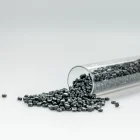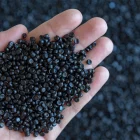Poly in Latin means “many.” A polymer is expressed as a high molecular weight compound formed by the combination of many molecules with chemical bonds. We’ve collated the answers to frequently asked questions about polymers, including what they are, their source materials, types, and their qualities.
Polymer is used in industry in 3 different ways. They can be classified as being frequently preferred in the industrial field in three different forms: rubbers, fibers, and plastics.
What is a Polymer?
The polymer can be considered a high molecular weight substance formed as a result of the combination of simple molecules called monomers with chemical bonds. It can be expressed as very large molecules because it consists of repeating subunits.
What is Polymer Raw Material?
Commonly encountered polymers are composed of hydrogen, carbon, and hydrocarbons. Such polymers have long chains indicated. These chains are interconnected. Some polymers contain only hydrogen and carbon atoms. These include polybutylene, polyethylene, and polystyrene as examples. Some other polymers produced have backbones containing elements other than carbon.
What are the Polymer Types?
There are three different types of polymers thermosets, elastomers, and thermoplastics.
Thermosets
Long-chain molecules are located in the amorphous network with cross-linking in plastics. Long molecular chains are linked by covalent bonds. Thermoset polymers exist in amorphous form.
Elastomers
Long molecular chains are sometimes cross-linked and found in amorphous linear bonding.
Thermoplastics
They can take the form of crystal structures or amorphous structures. Long-chain molecules are linearly linked here.
What Qualify as a Polymer?
Most of the polymers produced are thermoplastic. After production, it can be reheated and given different shapes. This feature of the polymer makes it simpler to reprocess and potentially simpler to recycle. Thermoset polymers cannot be remelted. Reprocessing is not an option after manufacturing. Different polymers have various characteristics. They can each have unique features.
Polymers are both significantly strong and lightweight. They are preferred in space stations, toys, and delicate nylon structures for pantyhose due to this feature.
Polymers are resistant to chemicals. Plastic structures of liquid soaps and various detergents may contain polymer raw materials.
They can be processed in a variety of ways. Food bottles, heavy pipes, fiber products, bulletproof vests, and cans of soft drinks can be produced by processing polymers.
The features and hues of polymers are numerous. They provide a wide spectrum of production and are often integrated with other components.
Petroleum, natural gas, and coal are the main ingredients used to make polymers. However, some polymers can be made from materials like cotton or corn.
Polymers can be used to create substances that cannot be created with other materials.
How Are Polymers Obtained?
Polymers are obtained by the chemical reaction of monomers. In nature, this process results in the formation of natural polymers, while synthetic polymers are made by humans. The category of naturally occurring polymers also includes starch, cellulose, and natural rubber. Man-made polymer manufacture rose over the 20th century and is now a thriving business. Steel, aluminum, and copper can be used as examples of synthetic man-made polymers.
What Industries Use Polymers?
Many aspects of modern life involve polymers, both natural and synthetic. They are preferred in a variety of industries, including communication, transportation, construction, highways, nutrition, medicine, and technology. Generally speaking, it is used in many facets of human life.
Polymers are frequently used in the clothing industry.
They could be regarded to be desirable in certain protection packaging and related industries.
Some of the homemade items contain polymer.
Polymers can be seen being used in practically all facets of the transportation industry. The usage of polymers is widespread in several other industries, including pharmaceuticals, transportation, technology, nutrition, and informatics.





